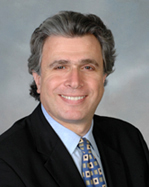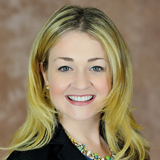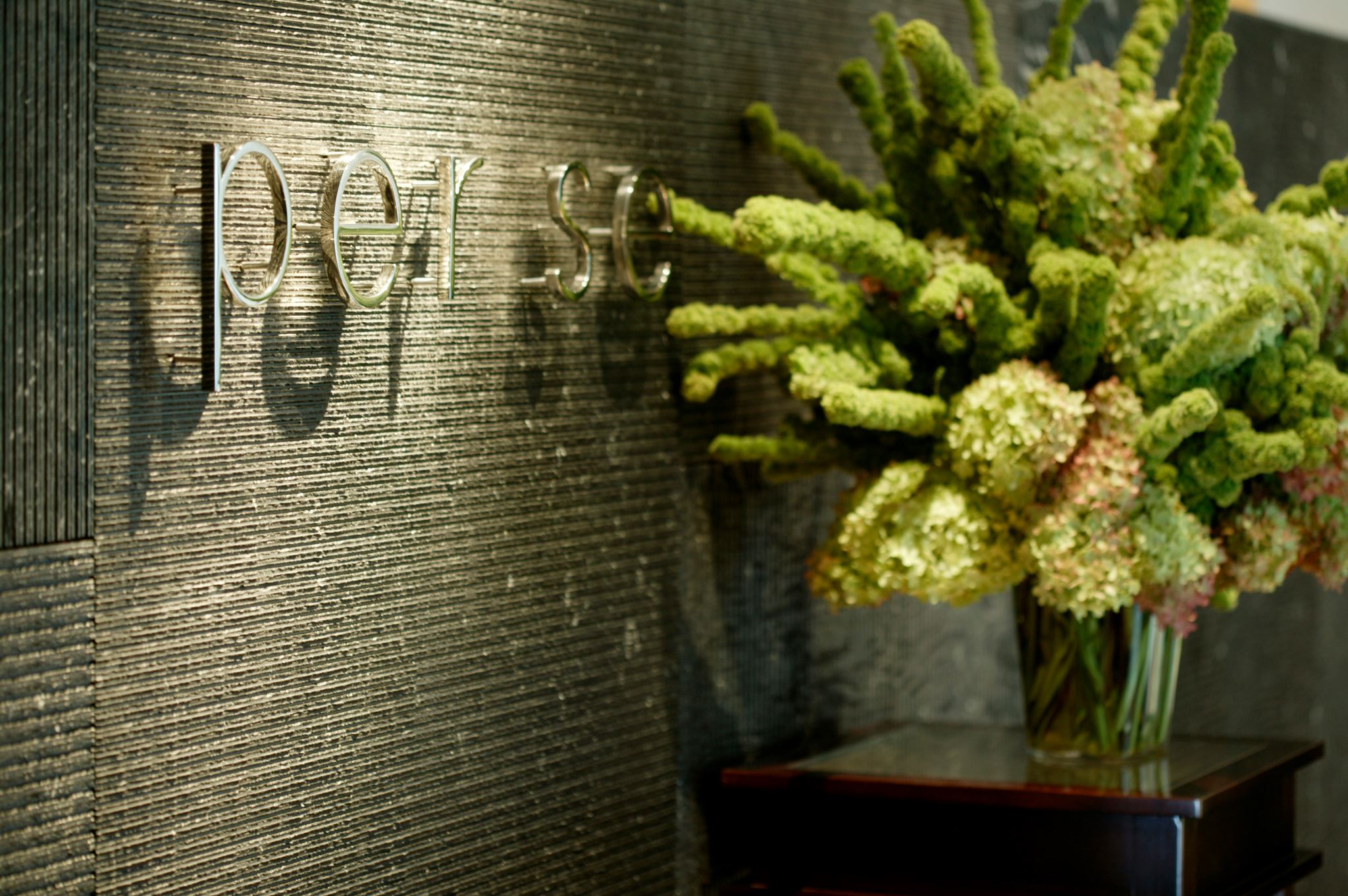
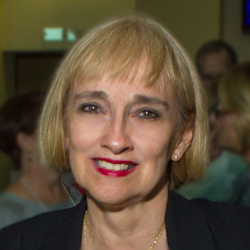
By Sandi Page, Member of the FAU LLS Marketing Committee
By now, you should all have received your FAU LLS Jupiter Fall 2016 Catalog of lectures and courses.
We are hoping that this school year’s class registrations will exceed our already record-breaking numbers for last year. To help in that effort, I asked several of our professors to submit an interesting anecdote or additional details about their upcoming lecture/course. Read on to discover their fascinating responses which cover half of the Fall Catalog offerings! Then, with catalog in hand, go register for classes! After you’ve signed up for your favorite professors, do yourself a favor and try some new classes with professors you’ve never studied with before. I know I’m going to!
In honor of the 2016 Summer Olympics, let’s try to break some records of our own!
FAU LLS Fall 2016 Lectures
Jacqueline H. Fewkes, Ph.D.
Bridging the Cultural Divide – Anthropological Optimism and Understanding the “Other”
Thursday, October 20, 2016 – 9:30-11 a.m.
How do we reach out to and understand those who are different from us? In this lecture, I will be discussing this issue from multiple perspectives, both as an academic question that drives the discipline of anthropology and an issue of personal curiosity. Considering the positive in world events, we will explore how optimism can be a powerful lens through which to view the world.
Myrna Goldberger
Before Hillary – They Were First!
Saturday, November 5, 2016 – 1-2:30 p.m.
I was a female lawyer who had to pressure a president to get the law degree I earned. I believed in women’s rights, including suffrage, property ownership and “freedom from male servitude.” I ran for U.S. president in the 1800s. I did not win, but my activist life influenced the path of history. Who Am I?
I was a clairvoyant who became the first woman on Wall Street, placed there by Cornelius Vanderbilt who praised my stock prophecies. I ran for president in 1872 representing the Equal Rights Party. I was arrested when I went to vote. My platform included right to abortion, open sex and demands that males own up to their infidelities. Who Am I?
Susan B. Anthony is not the correct answer to either description!
To find out the answers and the rest of their stories, come to Myrna Goldberger’s one-day presentation.
Heather Coltman, D.M.A., and Birgit Fioravante
Intimate Art Songs: Songs from the Jewish Heart
Tuesday, November 15, 2016 – 7-8:30 p.m.
Did you know Erich Wolfgang Korngold, the father of the orchestral film score and winner of two academy awards, also wrote great operatic works and many songs? Hear the songs sung first in Max Reinhardt’s acting class by Nanette Fabray.
Have you heard the hauntingly beautiful Yerushalayim Shel Zahav, the unofficial national anthem of Israel, written to celebrate the re-unification of Jerusalem? An original arrangement in English and Hebrew will be performed.
Did you know that Jewish songwriters and composers have contributed to the “Great American Songbook”? Hear many of your favorites by Bernstein, Weill, Rodgers & Hammerstein, and Sondheim, just to name a few.
Robert G. Rabil, Ph.D.
The Future of Iranian-Russian Relations: Implications for the U.S. and Israel’s National Security
Saturday, November 19, 2016 – 1-2:30 p.m.
Whereas the Obama administration has denounced Russian President Vladimir Putin as a dictator and a menace to international security, Secretary of State John Kerry has recently submitted a proposal to his Russian counterpart Sergei Lavrov to cooperate in Syria. By the same token, Israel’s leadership has expressed concerns over Russian intervention in Syria. Yet, Israeli leaders have made several visits to the Kremlin, apparently culminating in tacit agreements with Russia regarding Jerusalem’s national security concerns, especially vis-à-vis Iran. Obviously, growing Russian-Iranian cooperation has concerned both Israel and the United States. Still, the political mantra in both capitals has been a “deter-and-dialogue” message to Moscow. In Putin’s eyes, is this a message of weakness, shrewdness or unfounded rationality?
Wesley Borucki, Ph.D.
Who was the Real General George Armstrong Custer? Is His Historical Reputation Justified?
Thursday, December 1, 2016 – 9:30-11 a.m.
Custer’s character is a slippery issue. What exactly was George Armstrong Custer like? On the one hand, he was the practical joker who amassed 726 demerits at West Point in four years, by far the most in his class; who one day asked his Spanish instructor to translate the words “class dismissed” into Spanish before leading his classmates out of the room; and whose worst subject in his senior year of 1861 was, interestingly enough, cavalry tactics. On the other hand, he was also an officer who faithfully served on General George McClellan’s and General George Gordon Meade’s staffs before being promoted to brigadier general in June 1863 and, in the next week, led the Michigan Brigade with valor and gallant charges south of Gettysburg. He was the general who, in 1865, forced an Ohio restaurant owner to compromise the racist, segregationist practices of the time and allow his African-American cook to dine at their main table, but he was also in command in Louisiana after the war allowed “black codes” to stay in force. President Ulysses Grant criticized his conduct at the fatal Battle of Little Big Horn, but Custer’s widow Libbie dutifully defended her late husband’s reputation and conduct in a book and other writings until she died in 1933. In this course, we shall try to detect who the real George Armstrong Custer was.
Ronald Feinman, Ph.D.
The Life and Presidency of Richard Nixon, 1969-1974
Wednesday, December 7, 2016 – 2:15-3:45 p.m.
Nixon is the only President of the 20th century to have lost the Presidency (1960), and come back to win it twice (1968 and 1972).
Nixon is the only President who resigned his office, knowing he would have been removed by impeachment proceedings, and, therefore, deciding to quit.
Nixon is the most experienced President in knowledge and expertise in foreign policy ever to reach the Presidency.
Nixon, while considered a “conservative”, actually was quite “liberal” in many areas of domestic policy making, often overlooked by his reputation in foreign policy, and by the Watergate Scandal which led to his resignation from office.
On this day of the blog posting, August 9, Nixon resigned 42 years ago!
Robert G. Rabil, Ph.D.
Israel and the Arab Gulf States: A Superficial or Strategic Alliance in the Making?
Thursday, December 8, 2016 – 9:45-11:15 a.m.
It has been an open secret that Israel has had intelligence cooperation and trade relations with the Arab Gulf States. However, Arab leaders have brushed aside this growing relationship with Israel as inconsequential, often reiterating their opposition to Israel. Nevertheless, a recent high Saudi delegation, led by former Saudi intelligence chief General Anwar Eshki, visited Jerusalem in July 2016 and met with senior Israeli officials. The visit from the purported anti-Israel hegemon of the Arab world came as a shock to the “Arab street.” The visit belied the hackneyed Arab nationalist discourse and underscored the new dawning reality in the Middle East, whereby Arab Gulf interests strategically converged with those of Israel. But can the depth of this reality be gauged? Is it the product of an ephemeral need for a marriage of convenience or an authentic desire for co-existence? Will it become a bulwark against rising anti-Semitism or a deep trench for anti-Semitism?
Mehmet Gurses, Ph.D.
The Kurds: A Key to Salvaging Iraq and Syria?
Thursday, December 8, 2016 – 2:30-4 p.m.
The Kurdish YPG in Syria has proven to be the most effective ally of the U.S. against ISIS. Turkey considers our most effective ally on the ground a terrorist group, a branch of the Kurdish PKK in Turkey that has been fighting a war for more than three decades. Saudi Arabia and Turkey, two key allies of the U.S. in the region, have been “accused” of providing support for the IS, or turning a blind eye to its cross border activities. While Saudis are concerned about the rise of Iranian power, Turkey is trying to prevent the rise of yet another Kurdish entity across its borders. That said, amidst all of these unlikely, complicated alliances and shifting grounds, the Kurdistan Regional Government (KRG) in Iraq has joined forces with Turkey in exporting its oil and checking and balancing the rise of the PKK-led Kurdish nationalism in the region which the KDP, the dominant Kurdish group in KRG, considers a “threat” to its leadership.
I am sure you already have noticed the number of acronyms and quotations used in this short paragraph. Don’t get mad yet. That was intentional…
Well, welcome to the Middle East! And, of course, sign up for the class to get a better sense of the “mess”!!
Stephen Engle, Ph.D.
Turning Points of the American Civil War – New Perspectives
Monday, December 12, 2016 – 2:30-4 p.m.
In the 150 years since the American Civil War ended, contemporaries and historians have debated the Turning Points of the American Civil War—was it Chancellorsville, Antietam, Gettysburg, or Vicksburg—and have arrived at a general consensus that at least the war’s turning points were on the battlefield.
Yet, there were several other turning points that turned military advantages in the Union’s favor, and they might surprise you. In this lecture, I will explore how the war’s political nature turned the tide of the conflict into a struggle to win the contest at home as well as on the battlefield.
FAU LLS Fall 2016 Courses
Robert G. Rabil, Ph.D.
U.S. National Security and the War on Extremism
Mondays, October 10, 17, 24, 31, November 7, 14, 21, 28 – 9:45-11:15 a.m.
The presidential campaign has not only polarized the American public over national security but also underscored Washington’s and Western illiteracy about the ideology fueling terrorism across continents. Has the debate over what to call the campaign against terrorism reflected Washington’s misunderstanding or understanding of the challenges and threats facing the United States and its allies? Has the ongoing “war on extremism” in cooperation with Washington’s allies deepened the country’s understanding of the grave developments taking place in international affairs? The threats and challenges facing the United States and its allies are complex, multi-dimensional, and at times contradictory. Yet, they can be effectively addressed once what I call the triumphalist ideology of Salafism is understood in juxtaposition to a sober analysis of the major regional and international developments taking place. Only then can this war be won!
Paul Mojzes, Ph.D.
Dialogue Among Religions – Interreligious Dialogue
Mondays, Oct. 10, 17, 24, 31 – 12-1:30 p.m.
In 1999, my friend Boris Trajkovski was elected president of the Republic of Macedonia. A year later, he telephoned me as the ethnoreligious conflicts escalated into a low intensity war, telling me that they needed interreligious dialogue but did not know how to conduct it. I offered to help. This led to many trips to the capital of Skopje, culminating in a major Jewish-Christian-Muslim trialogue conference in May 2002. The purpose was to build confidence between religious leaders so they would assist in peacemaking rather than aggravating the situation. Eventually, a larger war was avoided, although tensions continue to this day. Tragically, President Trajkovski was killed in 2004 on his way to a conference in Bosnia when his airplane crashed.
Kurt F. Stone, D.D.
When the Legend Becomes History, Print the Legend! – Nine Classic Western Films
Mondays, Oct. 10, 24, 31, November 7, 14, 21, 28, December 5 (No class on Oct. 17) – 7-9 p.m.
Like just about every kid growing up in post-war America, I was addicted to westerns. Unlike most, however, we had any number of cowboy stars living in our neighborhood, with no fewer than 3 on our street – all of whom I delivered newspapers to. These were Milburn Stone (“Doc” on Gunsmoke), John Anderson (The Life & Legend of Wyatt Earp and The Rifleman, among others) and Jack Elam (Zorro, Rawhide and Once Upon a Time in the West). Mr. Elam scared the daylights out of me; he was tall, dark, had a glass eye, always needed a shave, and habitually played crazed killers. To me, he was danger incarnate; whenever I had to go and collect the monthly subscription fee (a whopping 65¢), I would knock lightly on the door, hold out my hand, try not to look him in his one good eye, and then hightail it down his long driveway as fast as my nine-year-old legs could carry me. One day, I told my father how menacing Mr. Elam was; how I really wished I could just stop delivering papers to him. Dad almost fell on the floor laughing and then informed me, “Mr. Elam is a pussycat; years ago he was a CPA, who got into movies because some fly-by-night film company he was doing the books for couldn’t afford his fee.” Well, the next time I went to his house to collect, he obviously could see a difference in my body language – that I was no longer such a “fraidy cat,” as we used to say. He gave me a broad smile, the gunfighter’s salute, and a quarter tip. From that point on, Jack Elam was one of my favorite cowboy actors . . . even if he once was a CPA!
I hope you will be a part of our Monday night class and watch some pretty terrific westerns . . . just like when we were kids.
Jacqueline H. Fewkes, Ph.D.
Anthropological Life Histories: Create your Own Autobiographical Film
Tuesdays, October 11, 18, 25, November 1 – 9:30-11 a.m.
I love watching anthropological films about other people’s life stories, as delving into personal histories can be so compelling and informative. As I watch famous films, I’ve often wished that I had a similar film that helped me to understand my own grandmother’s life, and, in turn, makes me consider creating something to pass on to my own children. But when you start to plan an autobiographical film, so many questions arise—how do you create a “story” out of the complexity of life events? What information is necessary in order to understand that story? How do you decide what would be significant for viewers and reflect what you know to be important? I hope we’ll explore these questions, and more, in this course as we view anthropological films that focus on the lives of individuals in many different societies around the world, and discuss making our own films.
Betsaida Casanova, M.A.
The Literature of Cuban Writer Alejo Carpentier
Tuesdays, October 11, 18, 25, November 1 – 12-1:30 p.m.
Cuban writer Alejo Carpentier is one of the most important Latin American writers and one of the best novelists of the 20th century. But, did you know that although he always considered himself to be Cuban and claimed to be born in Havana, he was actually born in Lausanne, Switzerland? His father was French and his mother Russian and he was taken to Cuba when he was a child. He lived many years of his adult life outside Cuba and always spoke Spanish with a heavy French accent. His great knowledge of music, architecture and the arts in general, greatly influenced his writing. He also incorporated Afro-Caribbean themes into his novels and other works. He coined the term “marvelous real” and was one of the first to use the technique that later developed into what was called “magical realism”. If you want to know about these concepts so relevant in the Latin American Boom, Alejo Carpentier’s Literature is the place to start.
Irving Labovitz, J.D.
OBJECTION! Current, Contentious and Confusing Legal Battles
Thursdays, October 13, 20, 27, November 3, 10, 17, December 1, 8 (No class on Nov. 24) – 12-1:30 p.m.
Why should there be any LLS student interest in our stodgy and boring judicial system? A few intentionally provocative queries follow.
Have recent impasses by a ‘deadlocked’ Supreme Court caused it to become an irreparably flawed “house divided”? Have certain recent acerbic comments by one of the Justices as to the quality of a presidential candidate violated the law or, at a minimum, long-standing ethical precepts mandating judicial impartiality? Is our legal system in disarray, with a plethora of conflicting trial court and appellate decisions on critical Constitutional issues?
The late Senator Daniel Patrick Moynihan once famously said, ”Everyone is entitled to their own opinions but not their own facts,” Applying judicially discerned similar facts to identical statutes or legal precedents frequently results in facially irreconcilable disparate outcomes that receive our investigation.
Finally, although we are all long since reconciled to the Supreme Court having decided the presidency as between Gore and Bush, did any students ever contemplate the High Court having to decide which LLS bathroom you must use…this is likely just around the (legal) corner.
The law is neither stodgy nor boring. You are invited to “deep dive” to achieve a measure of clarity.
Terryl Lawrence, Ed.D.
Artistic Inspiration
Fridays, October 14, 21, 28, November 4, 18, December 2, 9, 16 (no class on Nov. 11 and Nov. 25) – 11:15 a.m -12:45 p.m.
Artists seek inspiration – and when revelations occur – wonders happen. If we examine the History of Art, there is much evidence that the times in which people live, the world conditions, the pleasures and displeasures experienced, are motivation to develop, to create, to flourish. These factors, coupled with the ultimate creative products, allow us as viewers to delve more deeply into the components that generated the works of art. In these lectures on Artistic Inspiration, I intend to unveil many historical and personal secrets, passions, and influences, to make these masterworks come alive.
Benito Rakower, Ed.D.
A Culture War Conducted Through Film
Fridays, October 14, 21, 28, November 4, 18, December 2, 9, 16 (no class on Nov. 11 and Nov. 25) – 1:30-4 p.m.
Jean-Luc Goddard changed the direction and method of French cinema with one film – Breathless. The film features an American girl experiencing the more dangerous aspects of Parisian life in the company of a dashing, French criminal. He is totally captivated by Humphrey Bogart whom he imitates in style, manner, and facial expressions. In every aspect of construction, plot, and character, Goddard’s film is a startling homage to Hollywood films and the extraordinary resilience of American women.
Gavin Sourgen, Ph.D.
The Politics of Satire: From Horace to Charlie Hebdo
Mondays, October 17, 24, 31, November 7 – 2:30-4 p.m.
Are we entering an age in which (un)intentional self-parody nullifies the value and effectiveness of satire as a means of regulating power? The cutting Stephen Colbert roast of George W. Bush at the 2006 White House Correspondents Dinner was much watched and much quoted: “I know there are some polls out there saying this man has a 32 percent approval rating. But guys like us, we don’t pay attention to the polls. We know that polls are just a collection of statistics that reflect what people are thinking in reality. And reality has a well-known liberal bias.” George W. looked on sheepishly, producing that silly, awkward smile that will forever linger in the public imagination. Yet, to a large section of the American public, Bush’s almost childlike naivety was part of his charm; the more he was lampooned, the more he was liked. In many ways, these same paradoxical dynamics are exemplified and exacerbated in figures like Sarah Palin and Donald Trump. While humorous invectives on Trump abound, in a peculiar way his brazen distortions of truth preempt and outmaneuver the methods of parody and exaggeration on which satire rely. How do you successfully undermine someone whose popularity seems to grow the more he is undermined?
Aban Kavasmaneck, M.A.
Great Works of Western Literature and Philosophy
Wednesdays, October 19, 26, November 2, 9, 16, 30, December 7, 14 (no class on Nov. 23) – 11:15 a.m. – 12:45 p.m.
I welcome you to find out why literature and the classics stimulate relevant moral reflection and values in our complicated world today. Explore how timeless, as well as contemporary, literature offers a window to the human heart, and, thus, helps us cope with life. As Kleinberg puts it, “The force of good resides in actions, not in words.” So come and enjoy the shared interpretive discussion in literature and philosophy and be convinced how vital it is to contemplate the challenge of how to live in our global society today. I hope to see you this Fall!
Burton Atkins, Ph.D.
Understanding Politics Through Film
Wednesdays, October 19, 26, November 2, 9, 16, 30, December 7, 14 (no class on Nov. 23) – 4:15-5:45 p.m.
In my classes, I often talk about how movies, while entertaining, thrilling and dramatic, can also be thought of as “visual texts”, ways to communicate ideas about history, politics and culture like a textbook one might read in college. Sometimes even a single word in a movie can communicate thought-provoking ideas and leave an indelible imprint on us. “Rosebud”, Charles Foster Kane’s dying word in Citizen Kane was his last, desperate grasp at a childhood innocence swamped by his lust for wealth and power. “Plastics”. That one word spoken to a bewildered Benjamin Braddock in The Graduate captured the gulf growing in the 1960s between a restless youth counter-culture and an older, staid, generation rooted in traditional social values. Citizen Kane and The Graduate are but two illustrations of countless movies that present controversial and challenging ideas about our political and cultural landscape. Older movies, particularly, are like historical and visual time capsules, relics passed on to us from the past that lend perspective to how we have evolved as a people. For example, in this election year, we can look back with chagrin to what Mary Matthews (Katharine Hepburn) observed in State of the Union (1948) to see how far we have come in the past half-century alone: “Oh, that’s silly. No woman could ever run for president. She’d have to admit she’s over 35.” Mary’s observation on gender roles illustrates how we have evolved as a people. But movies sometimes remind us that certain attributes of human nature are constant as when Michael Corleone (Al Pacino) cautioned in The Godfather, “Keep your friends close, but your enemies closer.”
If you want to pursue ideas like these and explore how movies can serve as visual texts, then sign up for Understanding Politics Through Film. We’ll examine the human motivations and conflicts that form the foundations for politics. Think of it as a short course in political science. And you get to watch movies, too!
Katie Muldoon
From Europe to Iran and Back: Four Remarkable International Films
Thursdays, October 20, 27, November 10, 17 (no class on Nov. 3) – 2:30-4:45 p.m.; Film discussion 4:45-5:15 p.m.
Professor Katie Muldoon presents four unforgettable, life-changing stories of faith, terror, determination, and originality, all in superb cinematography and winners of multiple awards. From a women’s journey of self-discovery in Poland under Nazism, to a story of religious strength in North Africa in the 1900s, to illegal filmmaking in current day Iran and opera intrigue in France in the 1980s, each film will have pre-film information and post discussion.
Wesley Borucki, Ph.D.
The American Presidency and Its Development
Tuesdays, November 8, 15, 22, 29 – 9:30-11 a.m.
Of course, as the title of the course suggests, we shall explore the changing functions and perceptions of the Presidency over time, as forty-three different men with widely different views of the Constitution and government’s proper role have held the office and the United States’ role in the world has changed. But we’ll also look at some light-hearted aspects of the presidency along the way and separate myth from reality. Did William Howard Taft really get stuck in the White House bathtub and compromise his image? Was Andrew Jackson really so uneducated that the term “OK” has persisted in our language from his notation that was supposed to mean “oll korrect”? Did Harry Truman really just take off on walks without telling anyone from Secret Service? Did John Kennedy try to conceal how much golf he played because Dwight Eisenhower was perceived to have played too much? Did Jimmy Carter keep track of who was using the White House tennis courts? We shall look at the lighter side as well, and how at least these perceptions affected subsequent presidents as they thought about their public image.
Joan Lipton, Ph.D.
Prominent Jewish Artists from Europe and America
Mondays, November 14, 21, 28, December 5 – 2:30-4 p.m.
Most people know the name of Marc Chagall and the Jewish themes that proliferate his art. However, there are more Jewish artists who concentrated on social justice and other ethnic types rather than on Judaica. Among European Impressionists are Camille Pissarro and Max Liebermann. The next generation includes Amedeo Modigliani, Chaim Soutine and Jules Pascin. Many European Jewish artists found that America accepted them on better social and economic terms. The Soyer Brothers, Ben and Bernarda Shahn, Theresa Bernstein, Elie Nadelman and Jacques Lipchitz are fine representative examples.
You will be surprised at what you see and excited to add these artists to your visual repertoire.
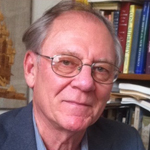



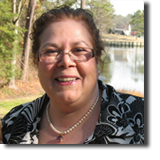




 the sky nearing sunset, Mom smiled. I smiled. “Remember when,” she began to say – and I do remember.
the sky nearing sunset, Mom smiled. I smiled. “Remember when,” she began to say – and I do remember.




